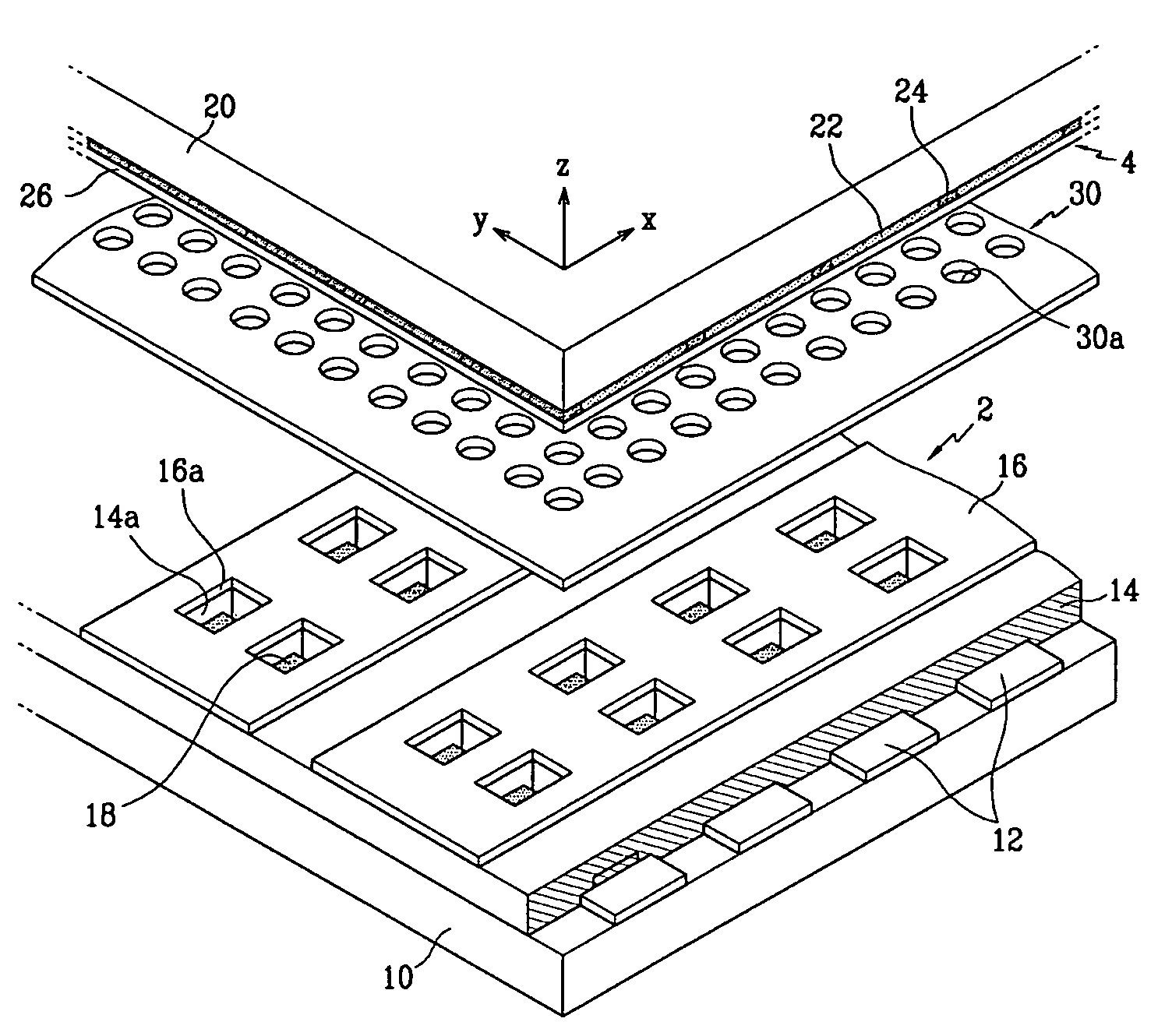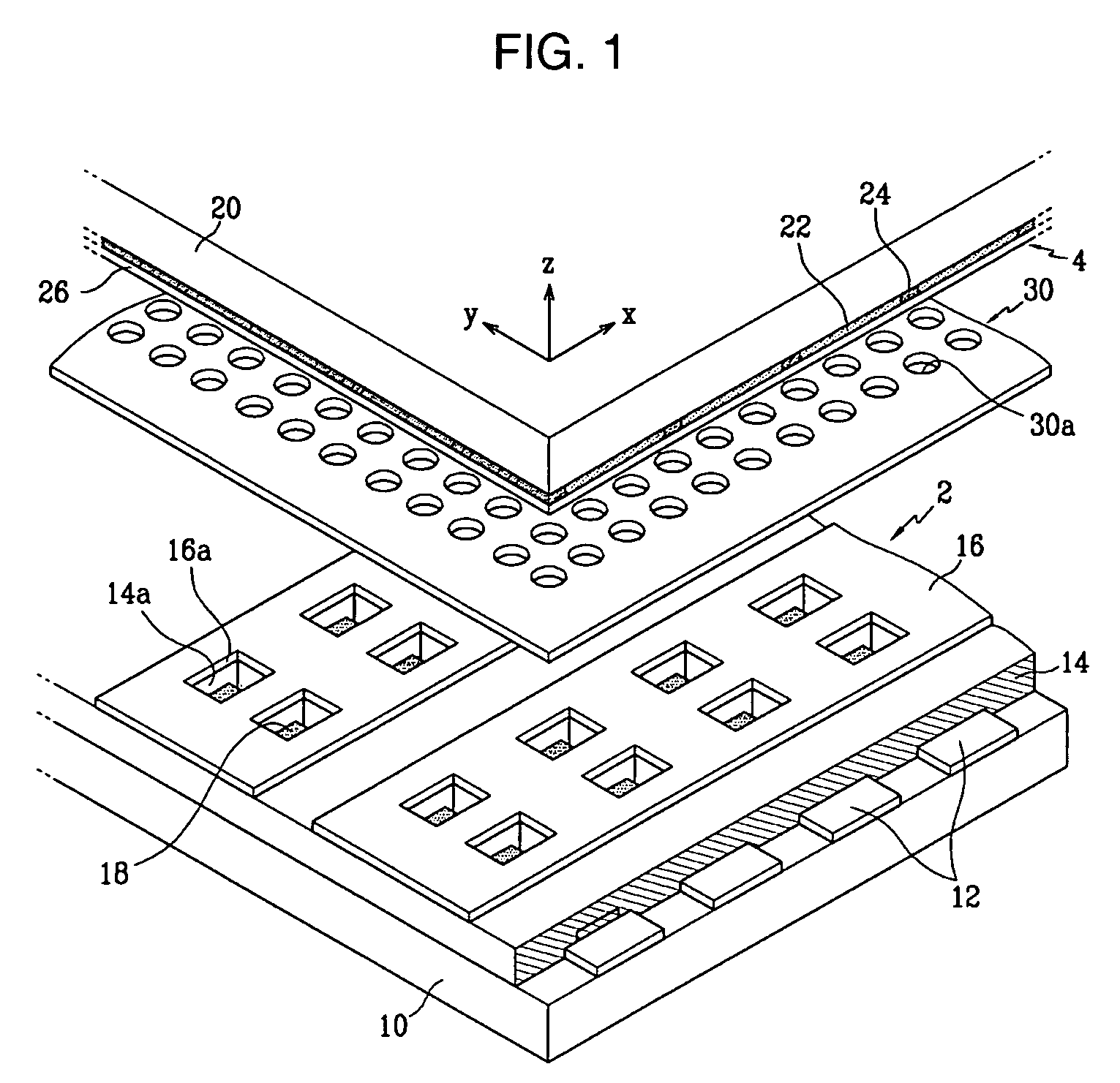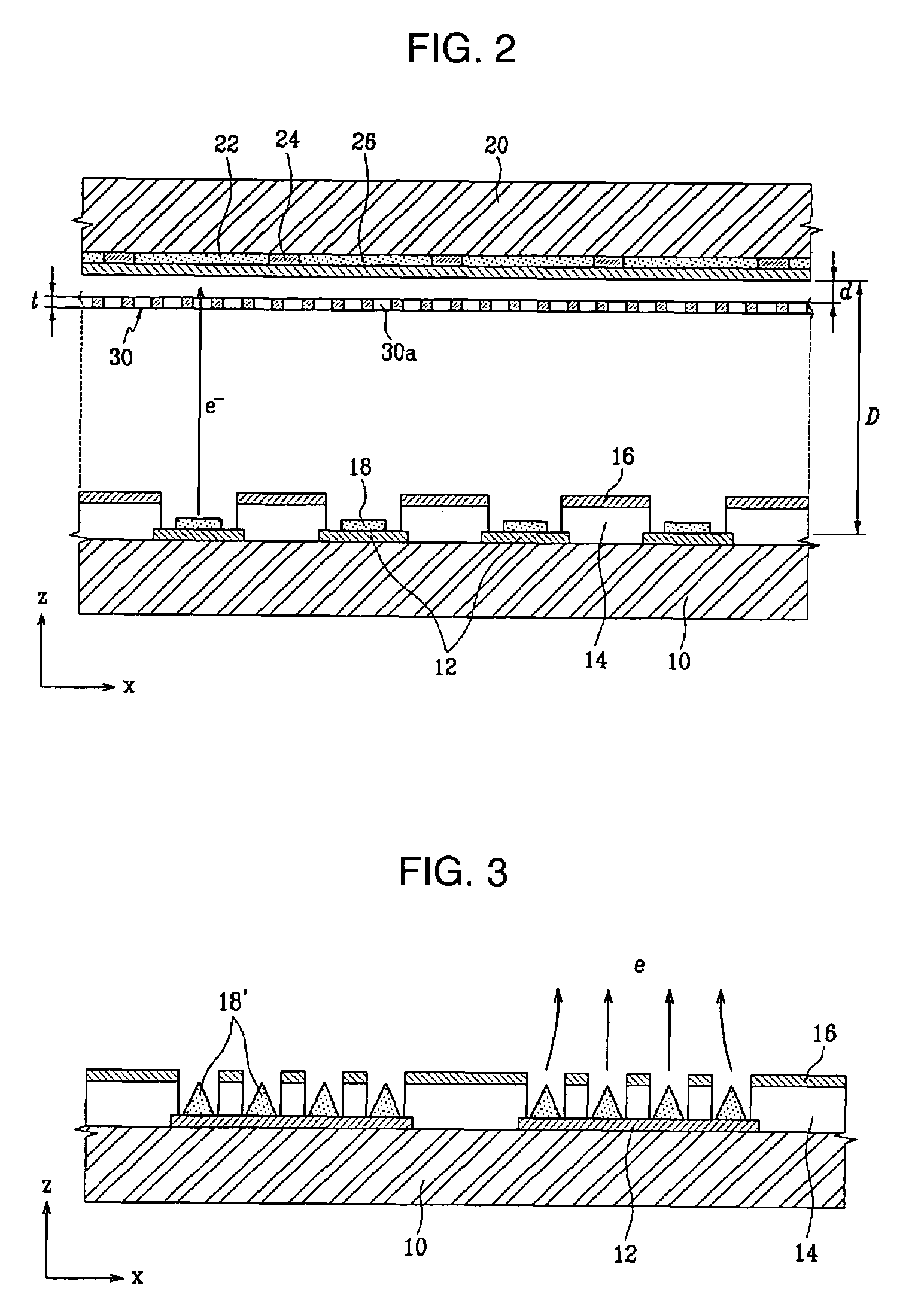Electron emission device with a grid electrode for focusing electron beams
a technology of electron beam and electron emission device, which is applied in the manufacture of electric discharge tubes/lamps, instruments, and discharge tubes luminescnet screens, etc., can solve the problems of complex and expensive method for assembling an electron emission device with the above described grid electrode, mis-emission of light, etc., and achieve the effect of enhancing the screen brightness
- Summary
- Abstract
- Description
- Claims
- Application Information
AI Technical Summary
Benefits of technology
Problems solved by technology
Method used
Image
Examples
Embodiment Construction
[0023]As shown in FIGS. 1 and 2, the electron emission device includes first and second substrates 10, 20 facing each with a predetermined distance therebetween to form a vacuum space. A grid electrode 30 is disposed between the substrates 10, 20. An electron emission array 2 is provided at the first substrate 10 to emit electrons toward the second substrate 20, and a light emission unit 4 is provided at the second substrate 20 to emit visible rays due to the electrons, and display the desired images.
[0024]Depending upon the type of the electron emission device, an electron emission array (e.g., the electron emission array 2) can have a different specific structure. The structure of the electron emission array 2 applied to an FEA-type electron emission device is shown in FIG. 1. However, the electron emission array of the present invention is not limited to the structure of FIG. 1, and may be altered in various manners.
[0025]Referring still to FIG. 1, a plurality of cathode electrod...
PUM
 Login to View More
Login to View More Abstract
Description
Claims
Application Information
 Login to View More
Login to View More - R&D
- Intellectual Property
- Life Sciences
- Materials
- Tech Scout
- Unparalleled Data Quality
- Higher Quality Content
- 60% Fewer Hallucinations
Browse by: Latest US Patents, China's latest patents, Technical Efficacy Thesaurus, Application Domain, Technology Topic, Popular Technical Reports.
© 2025 PatSnap. All rights reserved.Legal|Privacy policy|Modern Slavery Act Transparency Statement|Sitemap|About US| Contact US: help@patsnap.com



